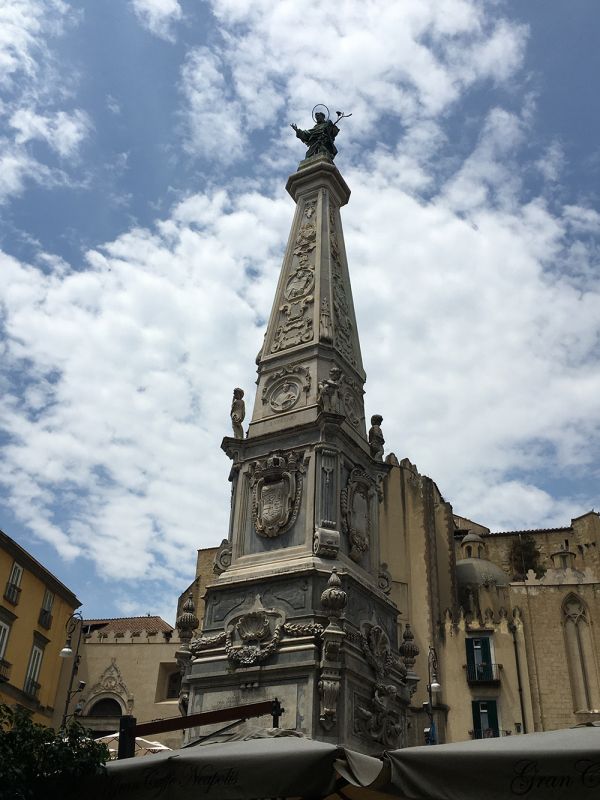One of the main road arteries of Naples is the lower decumanus, better known as Spaccanapoli, because it perfectly divides the ancient city into two parts.

It is also possible to come across two wonderful baroque spiers that soar into the sky with their very unique shape. The first is the Guglia dell'Immacolata, located in Piazza del Gesù Nuovo, in front of the church of the same name. It was erected between 1745 and 1758, on the site where the equestrian monument of Philip V of Spain once stood. The spire refers to the festive apparatus of the Baroque era and, in fact, appears to be rich in decorations, statues and geometric elements of all shapes. King Charles III, Queen Maria Amalia and the Jesuit father Francesco Pepe were the promoters of the work, which was built as thanks for the narrow escape from the plague of 1743 and the victory over the Austrians in 1744. The architect Giuseppe Genoino took care of the project Genuino, while the sculptors Matteo Bottigliero and Francesco Pagano, under the direction of Domenico Antonio Vaccaro, gave life to the statues and marble decorations.
The spire is spiral-shaped and, with an upward movement, it seems to touch the sky. Approaching, it is possible to observe statues of saints and bas-reliefs depicting scenes from the life of the Virgin. Finally, on the top of the monument is the statue of the Immaculate Conception in gilded copper. Every year, on December 8, the day of the feast of the Immaculate Conception, this statue is honored by the Neapolitan people with a bouquet of flowers, placed by the firefighters in the presence of representatives of the institutions and passers-by.
The Guglia di San Domenico, located in the square of the same name, is the second spire that we meet along Spaccanapoli. It was commissioned in 1656 by the Neapolitan people as a votive offering to San Domenico. The history of this monument is rather troubled due to some circumstances that slowed down its construction. Cosimo Fanzago was called to design the spire, who at the time was engaged in other works. Perhaps for this reason, starting from 1658, the name of the architect Francesco Antonio Picchiatti began to appear in documents. However the works, even with the new designer, went slowly and resumed only between 1679 and 1680, with Lorenzo Vaccaro. The construction could only be considered completed in 1737, with the massive intervention of Domenico Antonio Vaccaro, son of Lorenzo.
The spire, almost pyramidal in shape, rests on a large quadrangular base in piperno made by Fanzago and is divided into three orders. In the first we find two inscriptions and two double-tailed sirens, perhaps sculpted by Lorenzo Vaccaro. The second order houses the coats of arms of the city of Naples, those of the Dominican order, the kings of Spain and the viceroys of Aragon, executed during the planning phase by Picchiatti, but physically arranged by Domenico Antonio Vaccaro. The last order instead sees the marble busts of four Dominican saints, inserted in as many medallions, also revised and placed by Vaccaro junior. Finally, crowning the spire is the bronze statue of San Domenico, whose author is not yet known, even if it was made on a model by Domenico Antonio.



Comments powered by CComment